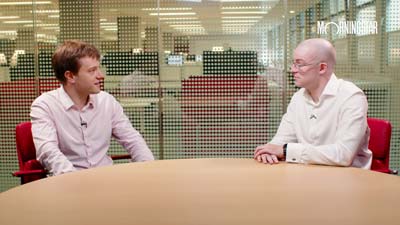Emma Wall: Hello, and welcome to the Morningstar series, "Why Should I Invest With You?" I'm Emma Wall, and here with me today is Fraser Lundie, manager of the Hermes Global High Yield Bond fund.
Hello, Fraser.
Fraser Lundie: Hi, there.
Wall: So, looking at the IMA stats that came out this week, they showed that bond funds had outflows for the first time since they have been recording data, which is since 1992. It's quite a long time, but high yield bucks that trend, doesn't it? It doesn't do what other bond funds do.
Lundie: Yes, I think that's correct. And I think there is a few moving parts here. For me, high yield is right in the middle between equities and bonds, and therefore – both in terms of return and volatility characteristics and also in terms of the moving drivers and flows. And so as that is kind of a catch-all for some of the movements that is going in terms of great rotation into equities, but there is also a lot of regulatory changes in place, which is meaning that there will remain a structural flow into high yields both from insurance companies, pension funds, et cetera, who need to capture real yields but may be can't take some of the volatiles associated with equities.
Wall: You are also Head of Credit at Hermes, so you can comment about the asset class as a whole. There is a lot of rumour around that 2014 is going to be the year that bond yields will suddenly kick off and start to rise. This is after 20 years of a bull market where prices have been coming up and yields have been going down. How do you invest as a manager in that asset class when prices are falling?
Lundie: I think that's clearly a risk. It may end up being a tail risk as you suggest or it may be more gradual. I think more gradual is probably most people's base case. But regardless, it does pose a threat to the capital in fixed income asset classes.
For me on the high yield side, the issue is more related to convexity rather than duration, because there is call options within high yield bonds whereas typically in investment grade or sovereign bonds there isn't. That plays around with the risk return profile of the asset class. And so the key really in this environment where we're likely to see rising bond yields is to optimise that convexity element and that's something we're very focused on.
Wall: And also as well as being able to comment across the asset class in terms of yield, you can also comment globally because this fund does invest everywhere. Where are the opportunities lying going forward? Is it in emerging markets with those suppressed currencies?
Lundie: Actually we do see some opportunity on valuation grounds on the cusp of emerging markets. So by that I mean global tier-one players in whatever their sector is who happen to be tagged with an emerging market brush and therefore are trading at cheaper valuations.
So while there is clearly a premium attached and there should be because of the related volatility. If you're talking about the likes of a CEMEX, in the cement sector, for example, I don't see given that their end markets are very similar to peers such as Heidelberg, Lafarge, Holcim, there should be such a significant discount attached to it. And we are seeing more and more of those types of situations across the cusp of emerging market. So that's an area.
In terms of U.S., Europe, there are different themes going in bond land, essentially the U.S. because it is benefiting from more trend or above trend growth. There is a lot of shareholder friendly activity going on in terms of M&A, in terms of growth CapEx, special dividends, et cetera, particularly in areas of the market like energy and communications, whilst in Europe it is obviously benefitting from balance sheet retrenchment mode still, particularly Southern Europe.
And so that as a creditor is a great place to be. That said, a lot of that is now in the price given the outperformance of Europe over the last 12 to 18 months. Net-net we’re actually somewhere close to home in terms of that view.
Wall: So you just have to be picky.
Lundie: Yes, but picky in terms of security selection as opposed to just company selection. The key thing in high yield right now is that there is essentially no near-term or even medium-term default risk. Default risk is not driving returns here. What is driving returns is things like duration and convexity as it relates to rising bond yields as well as volatility and liquidity risks.
And so you can be the best stock picker in the world right now and that won't necessarily guarantee you good returns. It' actually about making sure you get the correct security, and to be able to that involves investing globally.
Wall: Fraser, thank you very much.
Lundie: Thank you.
Wall: This is Emma Wall for Morningstar. Thank you for watching.





























